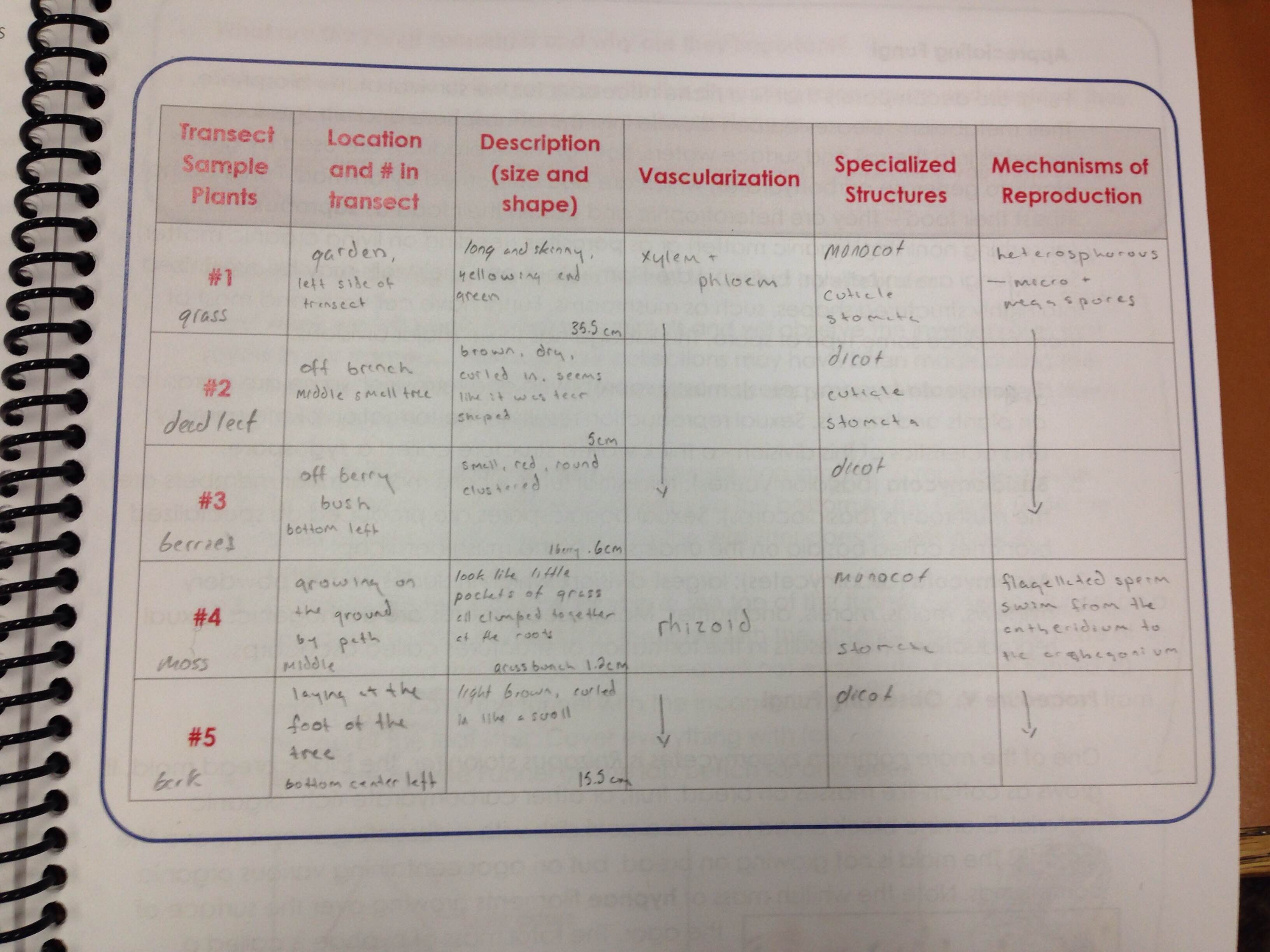User:Jacquelyn M Smith/Notebook/Biology 210 at AU
2.20.15
https://docs.google.com/spreadsheets/d/1WwEckOVnlZ6jx9CaVtJ71NQM3O7GDBzrlhc5Ep-viI4/edit?usp=sharing
See link for zebrafish data.
4.8.15 This is your zebrafish data but it doesn't include conclusions or any images. You are also missing your 16S entry. SK
2.24.15
No conclusions to invertebrate lab.
No vertebrate lab notebook. Need to include a food web.
SK
2.12.15
LAB 5: INVERTEBRATES
This lab focused on the diversity of invertebrate life in our transect. It composed of several observational procedures, concluding with an analysis of the Berlese Funnel we set up with leaf litter last week.
Procedure 1 Observe invertebrates from different phylum under a dissecting microscope. Describe their movement in relation to their body structure.
The acoelemate, Planaria
Planaria have a slug-like body and a slow swaying movement while stuck to the side or bottom of the jar.
The pseudocoelomate, nematodes
Nematodes have very small, elongated bodies. They slowly swim through the medium, extending and retracting their bodies to propel forward.
The coelomate, Annelida
Annelida scrunches and stretches its segmented body in an accordion fashion to slide between the dirt.
Procedure 2 Observe different classes of arthropods to help identify those from the transect later.
Procedure 3 Cataloged invertebrates from our transect that cultured in our Berlese Funnel for the last seven days.
Fig. 1
Fig. 1 shows the set up of the Berlese Funnel.
We identified the following organisms...
2.5.14
LAB 4: PLANTAE AND FUNGI
In this lab we collected and analyzed plant samples from our transect.
Fig. 1
Fig. 1 shows the descriptions of plants brought back from our transect.
2.4.15 This notebook entry is unfinished. You need to include detailed descriptions of your Hay infusion, which niche you obtained your protists and what protists you found in your sample. You need some images too. It all should be in the format of: Purpose, Methods, Observations and Conclusions. SK
1.22.15
Today we extracted, examined, and identified microorganisms from the hay infusion culture of our transect site.
Fig. 2
Fig. 2 shows my notes from the microorganism identification. We identified six unique organisms from two niches within our culture, the top film and the bottom mud.
Two months?? One species?? finish
1.15.15
On January 15, my group and I investigated a transect on campus. It was a mulchy area with several species of shrubs, a path, some grasses, two benches, and a large tree, located near the Massachusetts Avenue entrance to campus. It was approximately 20 m by 20 m in size, but not a regular square because the terrain and elevation changed throughout the site. We visited our transect around 6:00pm. The weather was clear but cold.
Fig. 1
Fig. 1 shows my notes from visiting the transect. I did my best to draw an aerial view of the site, but it was hard to grasp the distance between marks in the site, especially in that time of day. I hope to draw a more accurate portrayal, or take a photograph, in the future. On the page, I note several biotic and abiotic factors.
We also took a soil/ground vegetation sample. We collected our sample from just below the central bench in the aerial view above. Our sample was half dirk and half grasses from the top of the ground. We expect to culture several microorganisms with a hay infusion culture.


